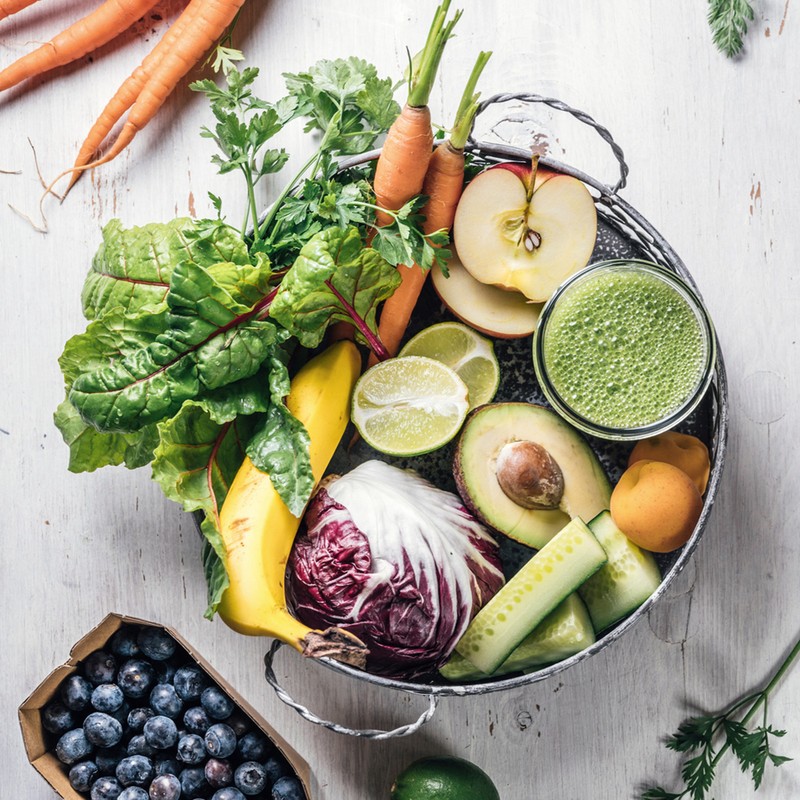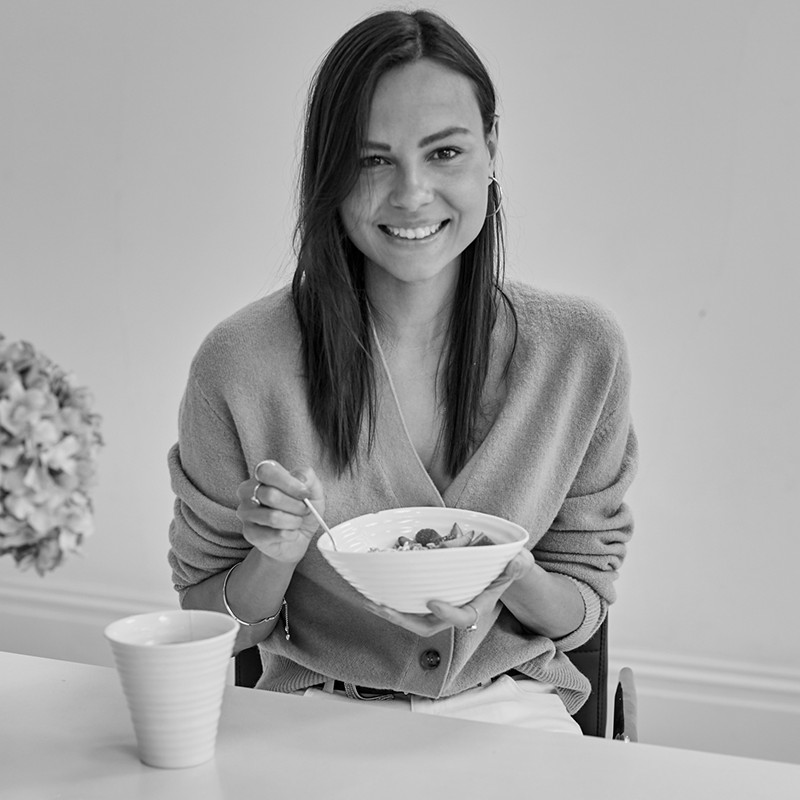30 Plant Foods A Week: How To Get There
Rhiannon Lambert
Registered nutritionist & founder of Rhitrition
Aim High To Improve Your Health
“It’s widely accepted that we have a healthier gut if we have a diverse range of gut bacteria. One study, which looked at over 10,000 stool samples, found those who ate more than 30 types of plant-based foods per week had more diverse gut microbes compared to those who ate less than ten. The idea of eating 30 different plants per week may seem daunting for some, but it’s easier than you think.”
Start By Eating Seasonally
“Seasonal produce provides more nutrients. Consider booking a regular delivery with a veg box to help you try out new things. Remember ‘plant-based foods’ also include wholegrain cereals, nuts, seeds, pulses such as beans, chickpeas, lentils and peas, tofu, tempeh, herbs and spices, and soy-based and other plant-based dairy and meat alternatives.”
Get Creative With Carbs
“Brown varieties of carbs all count towards your weekly goal. Try unfamiliar grains, pulses and different types of rice, and consider trying bread made with different types of wholegrain, such as spelt, rye, sourdough, or a sprouted loaf. Try topping a piece of bread or toast with a veg-packed spread or dip. Get into the habit of using these regularly as additional sources of protein, fibre and nutrients. Hummus, salsas, avocado dip and baba ganoush are all very versatile.”
Add More Toppings
“Adding pumpkin and sunflower seeds or fruits like apples, pears and bananas to porridge bowls in the morning or salads and soups for lunch is a great way to increase the number of plant-based foods in your diet. Also add herbs and spices, as these count too. Why not try making your way through your spice rack, adding a new herb or spice each day?”
Visit Rhitrition.com & follow @Rhitrition
Kim Pearson
Nutritionist
Keep It Simple
“At every lunch and dinnertime, ask yourself: how can I get one more portion of vegetables into this meal? If you’re eating out, order a vegetable side dish, and if you’re packing a lunch to take to work, chop up some veg crudités. If you’re heating up soup, throw in a handful of spinach leaves.”
Make Soup
“Making soups with lots of different vegetables is a great way to increase your tally. It’s also a great way of using up veg that’s starting to look less than its best. Get creative and throw whatever you have into a pan with some good-quality stock, cook and blend with a hand blender. Bonus points for batch cooking and freezing in portions so you always have a healthy, nutrient-rich meal to hand. Stews and curries are also a great way to pack in veg.”
Think Outside The Box
“Go to your local farmers’ market and speak to the producers – ask stallholders their favourite ways to cook and eat things. Be open to exploring new dishes and trying new vegetables. Remember sea vegetables such as kelp, dulse and nori all count too, as do fermented veg like sauerkraut and kimchi.”
Visit Kim-Pearson.com & follow @KimmyPearson
Alice Mackintosh
Registered nutritional therapist & co-founder of Equi London
Eat The Rainbow
“When you break down what you eat over the course of a week, you’ll probably notice you eat a lot of the same things over and over again. In fact, it’s thought that ancestral man had a more diverse diet than many of us do. Eating 30 different plant foods a week is a fantastic marker for overall health. Don’t default to the same old broccoli, peas and carrots. Instead, get creative with roasting aubergine and red peppers with spices such as ras-el-hanout (a Moroccan blend of around six spices), making slaw with red cabbage, carrots, apple and spring onion, or add watercress and fresh parsley to soups and stews.”
Get Blending
“A smoothie is a fantastic way to up your numbers. My go-to contains berries, kale, bananas, cucumber, flaxseed, raw cacao, ginger and oats, providing eight plants in one serving.”
Be Liberal With Herbs
“Don’t just use a few sprigs. Coriander and parsley disappear into dishes when cooked, so consider using a very generous handful when cooking. You can even finely chop the stems and add them to dishes, as well as homemade pesto.”
Buy A Slow Cooker
“Dishes such as stews, soups, casseroles, curries and ragu can sometimes cram up to ten sources of plant-based foods into one easy meal. They can also help to make plants the focus of your meal. Rather than picking the protein first, think about putting veggies, grains and beans centre stage. Deliciously Ella’s Eat Better app is a great cooking guide – the monthly meal plans not only contain 30 sources of plant-based foods but also hit the RDAs for protein and key nutrients such as iron and calcium.”
Go Slowly
“If you don’t eat much fibre in your diet, it’s a sensible idea to increase it slowly, perhaps by adding in ten sources for two weeks, then adding more. The gut has to adapt to higher levels of fibre by producing more enzymes to break plants down. If you notice a bit of gas and bloating, don’t be deterred – just go slow and build up. It’s also worth noting that some foods can be more triggering than others – beans, lentils, chickpeas and sulphurous veggies like leeks, onions, garlic, kale and broccoli. The exception to this is hummus, which is tolerated better as it’s blended. This will require some exploration but do remember that these foods aren’t bad for you – it’s just a matter of your gut adjusting.”
Visit AliceMackintosh.com & follow @AliceMackintosh_Nutrition
Sophie Trotman
Registered nutritionist
Experiment With Different Cuisines
“Many of us have memories of overcooked vegetables at school, but vegetables can taste delicious. Add Middle Eastern, Asian or Mediterranean dressings to your veggies to add more taste. You may find new flavour combinations that you love.”
Always Buy Mixed Varieties
“One of the simplest ways to ensure you’re reaching your weekly target is to buy mixed vegetables, grains, nuts and seeds where possible. It could be as simple as buying mixed peppers instead of red peppers, or mixed salad leaves instead of a gem lettuce. Bio&Me granola is great – it contains around 15 different plant foods per serving and is made with olive oil rather than inflammatory rapeseed or sunflower seed oil. Frozen mixed veg packs are also a winner.”
Start With One Meal
“Increasing your plant and fibre intake significantly can be intimidating, so start with one meal at a time. How can you optimise your breakfast? Can you add some seeds to your porridge or toast, or swap from frozen blueberries to a frozen mixed berries packet? Can you swap your regular granola to a plant-based granola? Can you add a sprinkle of cinnamon to your yoghurt? These changes may seem small, but they all add up.”
Visit SophieTrotmanNutrition.com & follow @SophieTrotmanNutrition
DISCLAIMER: Features published by SheerLuxe are not intended to treat, diagnose, cure or prevent any disease. Always seek the advice of your GP or another qualified healthcare provider for any questions you have regarding a medical condition, and before undertaking any diet, exercise or other health-related programme.
DISCLAIMER: We endeavour to always credit the correct original source of every image we use. If you think a credit may be incorrect, please contact us at info@sheerluxe.com.






